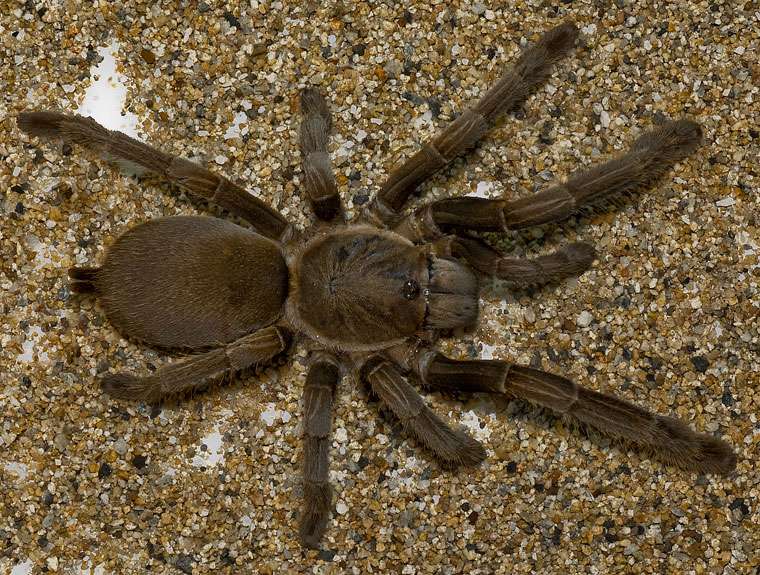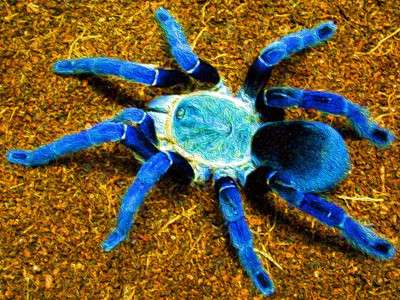
Selenocosmia crassipes, often known as the “Queensland whistling tarantula” (or “barking spider”), is a species of tarantula that is indigenous to Queensland’s east coast in Australia. Its scientific name is Phlogius crassipes. The term “whistling tarantula” refers to a group of Australian theraphosidae spiders that may hiss loudly when threatened. The spider makes this hissing sound by stridulating a patch of setae near its chelicerae. Other names for it include “eastern tarantula.”
The word “fat leg” comes from the Latin word crassipes, which describes the species’ particularly fat front legs. Selenocosmia crassipes can grow to have 22 cm-long legs (8.7 in). It is the largest Australian tarantula, measuring between 6 and 9 cm (2.4 and 3.5 in) from the front of its belly to the back of its eyes.
Description
- The robust, lengthy, and deadly fangs of the thick-footed tarantula can reach a length of one cm (0.39 inches). Its body measures 6 centimeters (2.4 in), and its legs are at least 16 centimeters (6.3 in) long, which is larger than a man’s hand. Since this very huge spider’s front legs are thicker than its rear legs, identification is comparatively easy. It is acknowledged as Australia’s biggest spider.
- The spider is known as a “barking spider” or “hissing spider” because of the hissing sound it makes when approached. Due to its reclusive nature, this species usually stays close to its burrow. Male lifespan is eight years, whereas that of a female can reach thirty.

Diet
Although this nocturnal ground dwelling species is commonly referred to as a “bird-eating spider” or “bird spider,” it is unlikely that it will ever come into contact with or feed on birds. These spiders eat mostly invertebrate animals, such as insects and other spiders. The diet also includes small vertebrates like geckos, skinks, and frogs.
Habitat
Selenocosmia crassipes is a burrowing spider that may be found throughout North Queensland. It lives underground in burrows that can be up to one metre (3.3 feet) deep, although it may be forced out into the open during times of high rain. Spiders in their infancy dig natural tunnels beneath rocks or roots. Adults extend their burrows up to 2 meters (6.6 feet) in length, which are lined with silk and have a tunnel leading up to a chamber with an air pocket big enough to last a few days off the main tunnel. It inhabits open forests along the Queensland Central coast in protected cooler areas such as gullies and rainforests. In addition, it can be found in and near gardens and other plant life.
Pet
Fast-growing Selenocosmia crassipes spiders are highly prized as pets. Its native population is threatened by the unlawful, oftentimes indiscriminate, harvesting of it from the wild.
Venom
Although an Eastern tarantula bite won’t kill you, it can make you throw up for up to six hours. A dog or cat might die from the venom in about 30 minutes.
Table





